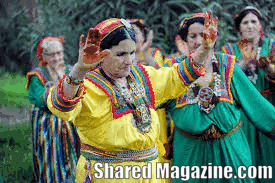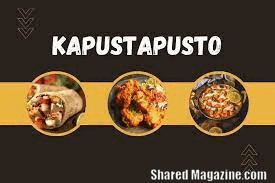Exploring the Richness of the Amazigh Culture
Introduction
The Amazigh culture, also known as Berber culture, is a tapestry of ancient traditions, customs, and a deep-rooted heritage. This unique cultural identity is cherished by the Amazigh people across North Africa. In this article, we delve into the intricate facets of this captivating culture, exploring its historical origins, language, art, social structure, challenges, and preservation efforts.
Historical Roots and Evolution
Early Origins of the Amazigh People
The Amazigh people trace their origins back to ancient times, fostering a rich history that dates back thousands of years. Their heritage spans across the Maghreb region, displaying resilience in preserving their distinctive identity.
Cultural Diversity and Influences
The Amazigh culture boasts a remarkable diversity, influenced by interactions with various civilizations throughout history. Phoenician, Roman, Arab, and other cultural encounters have intricately woven into the fabric of identity.
Impact of Modernization
Despite the influence of modernization, the culture remains deeply rooted in tradition. The evolving socio-political landscape has presented both challenges and opportunities for the preservation of their unique heritage.
Language and Traditions
Diversity in Amazigh Languages
One of the defining aspects of the culture is its linguistic diversity. The multitude of Amazigh languages and dialects reflects the rich tapestry of their heritage, each holding its unique significance.
Significance of Oral Traditions
The oral traditions of the culture people play a pivotal role in passing down cultural narratives, myths, and histories from one generation to another. These traditions serve as a living archive, preserving the essence of their cultural identity.
Festivals and Celebrations
This culture festivals and celebrations are vibrant reflections of their cultural ethos. From traditional music and dance to colorful rituals, these events showcase the community’s unity and heritage.
Art, Crafts, and Cuisine
Unique Amazigh Artistry
This culture art encompasses a wide array of expressions, from intricate designs in pottery to mesmerizing textile works. The symbolism and motifs in their artistry often depict elements from nature and daily life.
Traditional Crafts and Skills
The craftsmanship of the culture people is renowned for its intricacy and skill. From carpet weaving to metalwork, these traditional crafts are a testament to their ingenuity and cultural pride.
Richness of Amazigh Cuisine
This culture cuisine is a blend of flavorful dishes rooted in tradition. The use of locally sourced ingredients and traditional cooking techniques adds depth and richness to their culinary heritage.
Social Structure and Community
Family Values and Structures
The Amazigh society places great importance on family ties and values. Their social structure is characterized by strong family bonds and a deep sense of community.
Community Bonding and Practices
Communal practices and gatherings are integral to the this culture way of life. These events foster a sense of belonging and solidarity among community members.
Challenges and Preservation Efforts
Contemporary Challenges Faced
In the face of globalization and modern challenges, the Amazigh culture confronts threats to its preservation. Issues such as cultural erosion and socio-economic changes pose significant challenges.
Initiatives for Cultural Preservation
Despite challenges, various initiatives and organizations work tirelessly to safeguard the this culture cultural heritage. Efforts in education, cultural promotion, and advocacy aim to preserve this rich legacy for future generations.
Conclusion
The Amazigh culture stands as a testament to resilience and cultural richness. With its vibrant traditions, language diversity, and artistic expressions, it continues to thrive amidst the challenges of the modern world.
FAQs
There are various this culture languages and dialects, estimated to be around 30 different ones.
Some popular festivals include Imilchil Marriage Festival, Tan-Tan Moussem, and the Ghadames International Festival.
Amazigh cuisine is characterized by its use of locally sourced ingredients and traditional cooking techniques, offering a diverse range of flavorful dishes.
Contemporary challenges include cultural erosion, socio-economic changes, and the impact of globalization.
Supporting cultural initiatives, promoting awareness, and respecting this culture traditions are key ways to contribute to cultural preservation.



